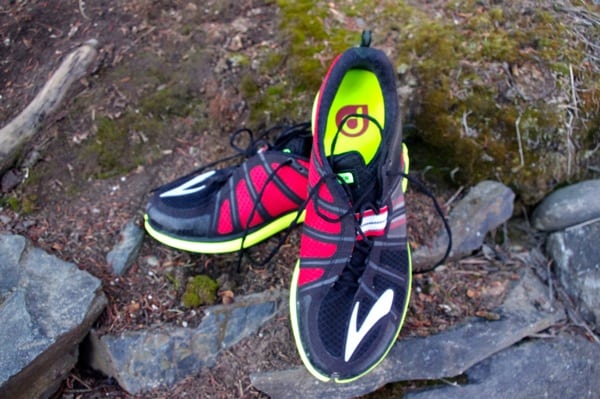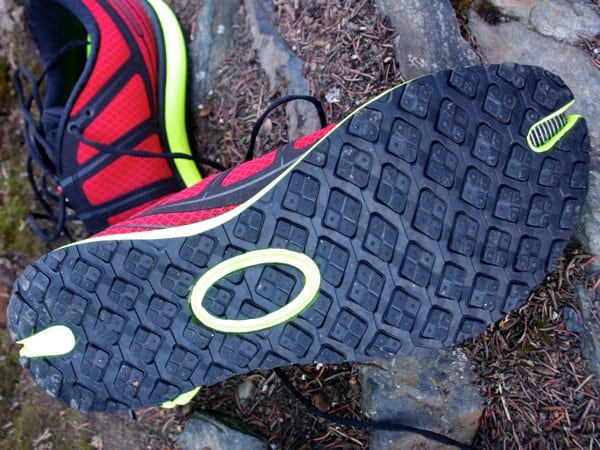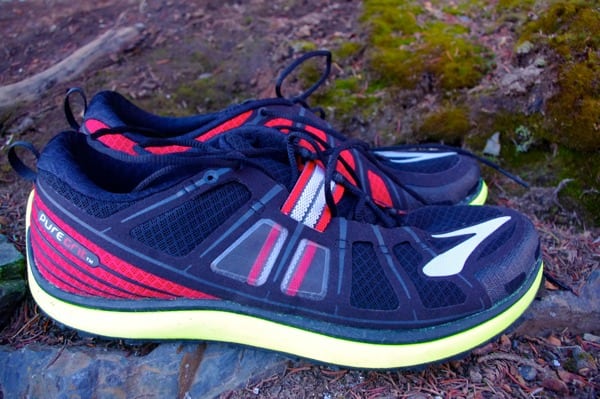Our Favorite Trail Running Shoes
Check out our Best Trail Running Shoes article to learn about our current favorite trail running shoes!
Brooks PureGrit 2 Review
Nearly two years ago, when Brooks announced that they were going to be offering a trail shoe as part of their “Pure Project,” I joined many of you in being solidly excited about this offering. Minimalist shoes were still coming into their own and to have a model coming from a mainline maker, such as Brooks, was a signal that we might be seeing more options for lighter/nimbler rides on our trails.
As soon as the original PureGrits (iRunFar review) hit the market, I had a pair of them on my feet. And, I was generally pleased with the results. Brooks put together a shoe that wrapped the heel well, provided excellent ground feel, and had a last with great room in the forefoot. But, there were a couple of flaws: the slippery soles, the thin tongue that had a tendency to bunch up, and the “Nav Band,” whose function was so mysterious to me that I cut it off.
This year, Brooks put out updated versions of all the Pure Project shoes (and added a new model). The PureGrit received considerable attention and redesign as part of this update. The “new” Brooks PureGrit 2 ($110) has made some significant strides in important areas, but left a few quirks in place.

The Brooks PureGrit 2.
What the PureGrit 2 Does Right
Outsole
The sole on the original PureGrit was one of the most questionable aspects of its design. The combination of the soft-edged lugs and the type of rubber used made the soles prone to being slippery… dangerously so at times. Clearly, Brooks heard this feedback loud and clear.
The original tread has been replaced by a consistent geometric tread. In my side-by-side comparison of the two shoes, the difference in traction is quite clear. There is better adhesion to rocks and grabbing power in the mud is greatly improved. To my eyes and fingernails, the rubber appears to have remained the same between the two models.

The Brooks PureGrit 2’s outsole.
Tongue
Gone is the thin and bunchable tongue of the original PureGrit! In its place stands one of the best updates to the shoe, an asymmetrical, padded tongue that is reinforced by asymmetrical lacing. The tongue on the PureGrit 2 is a continuation of the lateral (outside) upper. It wraps over the top of the foot and tucks under the medial (inside) upper.
This is a huge improvement for me over the original. I had consistent problems with the original tongue bunching up under the laces and not staying in place. Not only does the asymmetrical design guarantee that those two issues do not happen, it also allows for the laces to run down the lateral side of the foot, eliminating any pressure points on the top of the foot. If you haven’t caught on already, I am sold on this design. It is quick-to-lace, comfortable, and fairly hassle-free. (Or, as hassle-free as a tongue can get.)
The Rest
Other than those two major improvements, the best thing Brooks did with the PureGrit 2 was to NOT change much else (a few exceptions below). The last has remained the same. The heel lock remains consistent and comfortable. And the midsole provides a semi-firm ride without sacrificing much ground feel. They kept what made and continues to make this shoe an incredible model.
What the PureGrit 2 Doesn’t Do Right
The “Nav Band”
There are some shoes that have designs aspects I will never figure out. Altra has their trail/tail rudder. And, the Pure line has its “Nav Band.” On the original PureGrit, the Nav Band was a 2-inch piece of elastic that connected between the two sides of the upper. I never found it to be useful. In fact, it usually got in the way of lacing up the shoe. In the end, cutting it off didn’t change the feel of the shoe to me at all.
On the PureGrit 2, the Nav Band remains in all its mysterious glory. It has shifted to the side of the shoe to coincide with the asymmetrical design of the lacing. And, Brooks has sheathed it under some clear mesh, which protects it (for now) from my shears. As I lace and run in the shoes, it remains slack. The elastic only takes tension when I am putting my foot in or out of the shoe. Perhaps my feet are just too low-volume to appreciate its true purposes. But, for now, I still consider it extra material that adds weight and doesn’t do much other than look marginally cool.
Weight
The reported weight on the PureGrits has gone up from 8.7 to 9.7 ounces for a US men’s size 9. I can’t whine too much because it is still a great trail shoe under 10 ounces. And, more importantly, I’m sure some of that extra ounce is in the thickened tongue and the increased tread. So, while nobody wants to see weight creep up on a model of shoe, I would contend the ounce gained is worthwhile.
Overall
This is an easy model of shoe to mark as a winner. For me, it handles all lengths of runs capably. It scores bonus points for correcting two major issues from the previous model, while leaving all the pieces in place that made the previous model a great shoe. Brooks did a great job moving the PureGrit line along and I hope they continue to make as many or as few tweaks as necessary in the future to keep it on the market.

Another glance at the PureGrit 2.
Call for Comments
- If you ran in the original PureGrits, what did you think of them?
- Anyone out there get some miles in the PureGrit 2s, yet? If so, what did you think?
- What are your experiences with the asymmetrical design of the tongue and lacing?
- Have you found the Nav Band to be a useful feature?
